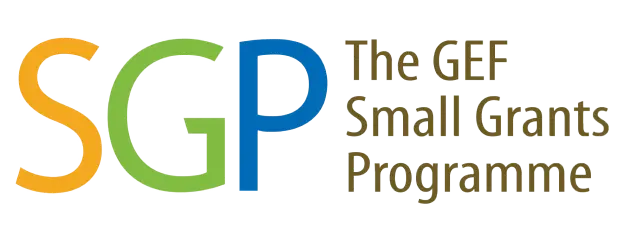Indonesia Berseru Association
(INS/SGP/OP6/Y2/STAR/BD/18/027–Indonesia Berseru Association)
Specific objective 1: Ecosystems, Biodiversity and Natural Resources (Wakatobi)
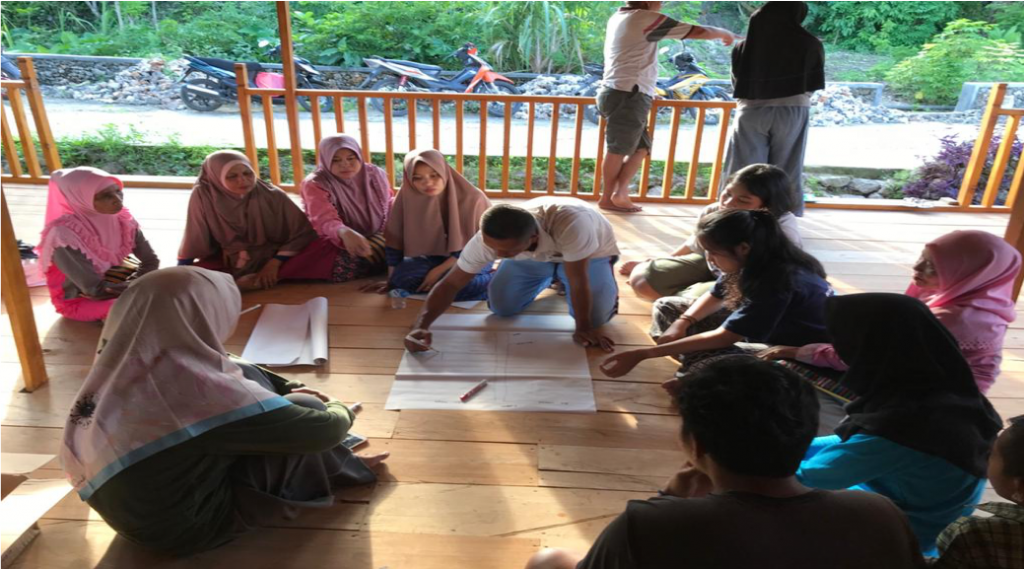
- Sejahtera Village School in Pajam Village, Kaledupa with the Panglima Weaving Group, January 10 2019.
- Participants map their food resources and create a consumption balance. Participants realized that their dependence on food resources from outside the village and even outside the island was very large.
- This initial discussion is an opening to discuss a more comprehensive and sustainable food system and how to live sustainably on small islands with limited resources.
- This village, which is located in the highest area on Kaledupa Island, has the smallest inventory of fish species among other villages.
- The advantage is that they begin to know the types of plants related to the weaving process and how to cultivate them.
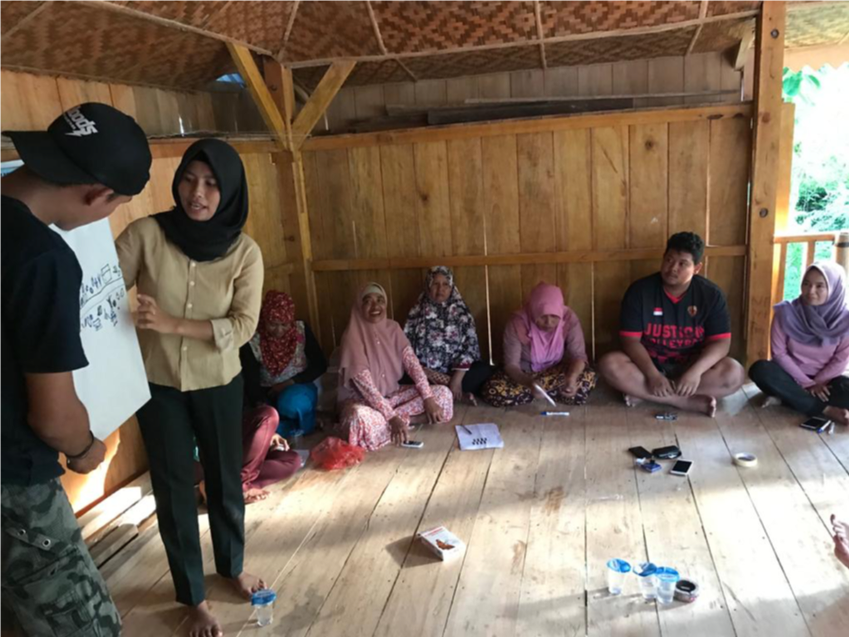
Prosperous Village School in Horuo Village, held on January 11 2019, at the Village office.
- Participants described the village and its food resources with strong debate.
- From the process that took place, it appeared that residents had never been invited to think about the ideals of their village, so there was quite a long debate at the start of the process.
- They realized that there were many things that could be extracted from their village, and had not been maximized, especially food agriculture.
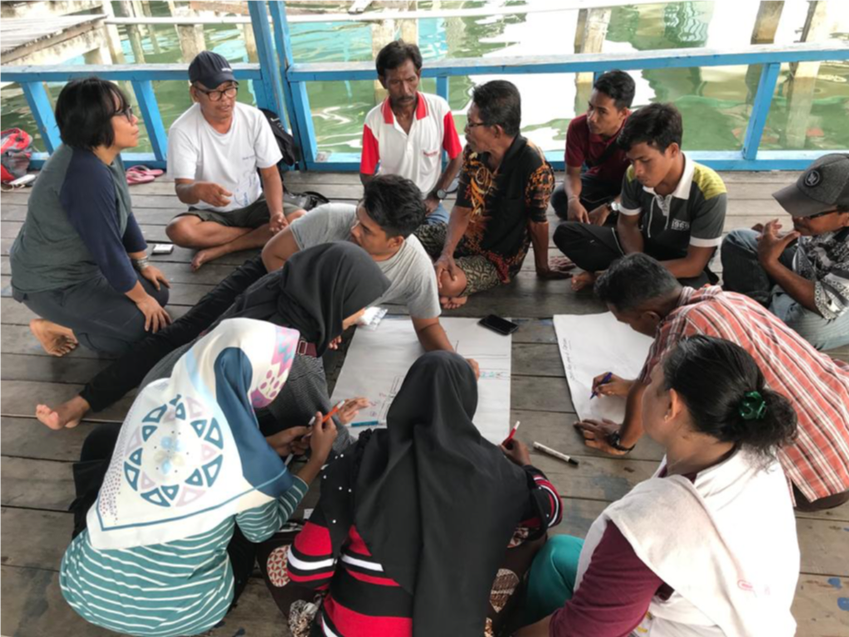
- As part of the Bajo community, the participants' knowledge of fish resources is very high, around 70 types in a short time. However, it is still far from Forkani's list of around 250 types. There is knowledge that is missing, and must be discussed further.
- Very high dependence on land for daily food needs, although one or two people said they could grow several types of kitchen needs.
- As a community that is often "monitored" by TN, residents are not very open to talking about their seafood storage system, which is around their homes.
Specific objective 1: Ecosystems, Biodiversity and Natural Resources (Gorontalo)
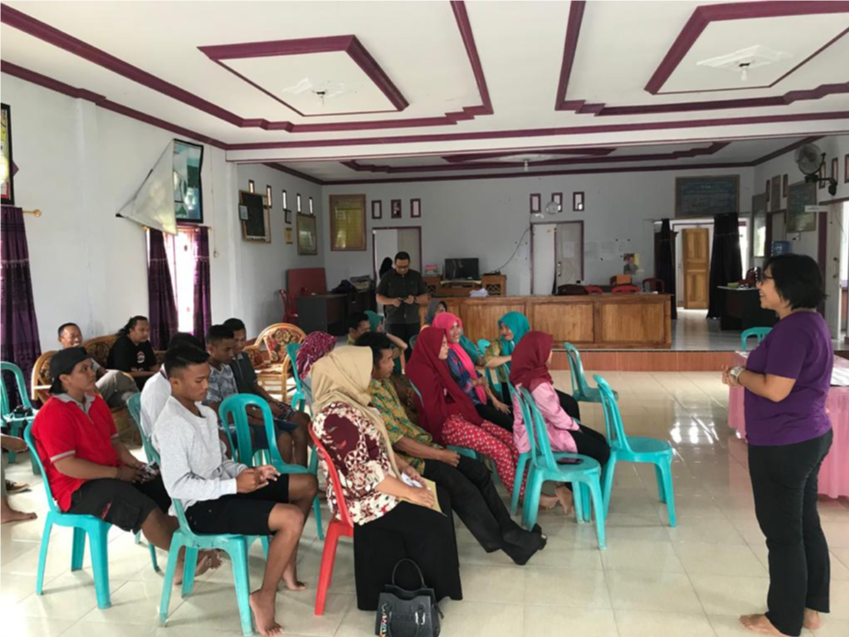
- The meeting was held at the North Tamaila Village Hall on May 20 2019. The activity was held by a meeting with the North Tamaila Village Village Head and his staff (Bukhari Buroma). As well as Bumdes and PKK administrators.
- Bumdes had stalled because it was used for savings and loans, so they decided to move into an economy that could help residents. But due to limited funds, progress was not rapid.
- There are 6 Bumdes administrators, plus 1 commissioner, most of whom are farmers who are not used to doing business. The challenge is defining what business will be developed in the village. It seems that the leader is still Pak Desa, who is often called father.
- Several economic resources have been identified: Management of thatch, with stems that can produce sago. The riverside area will become an area for seedling rejuvenation. Old trunks that are 30-40 years old are worth 1-2 million. However, data collection on the potential of thatch trees is only half done.
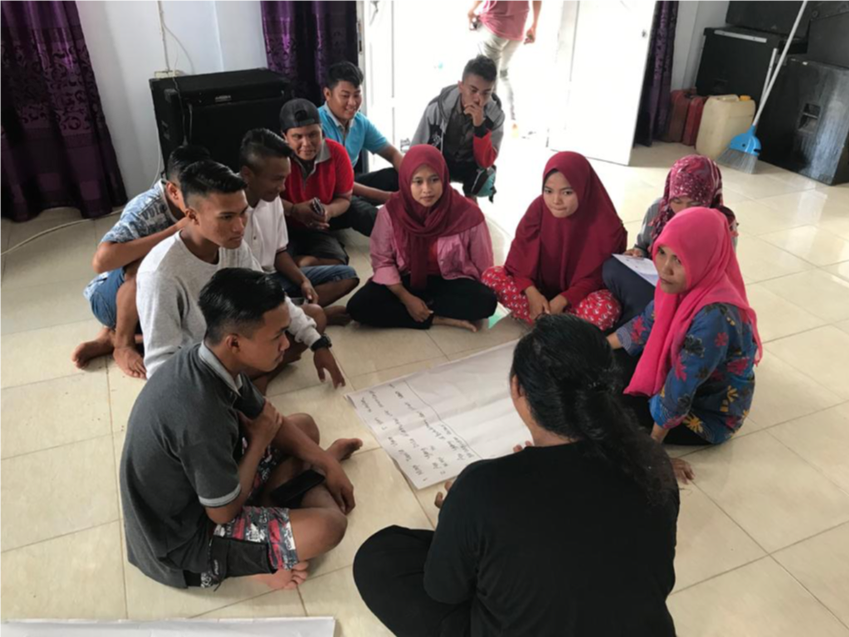
- A meeting with young people from North Tamaila village was held at the North Tamaila Village Hall on May 20 2019, after a meeting with the more mature community.
- Some of the participants are members of Karang Taruna and some are still studying outside the village.
- It can be seen that these young people do not yet understand the resources that the village has, and do not have a platform to develop their capacity. But as young people, they want their village to progress, and one of the things mentioned is developing waterfall tourism, so that the village is better known.
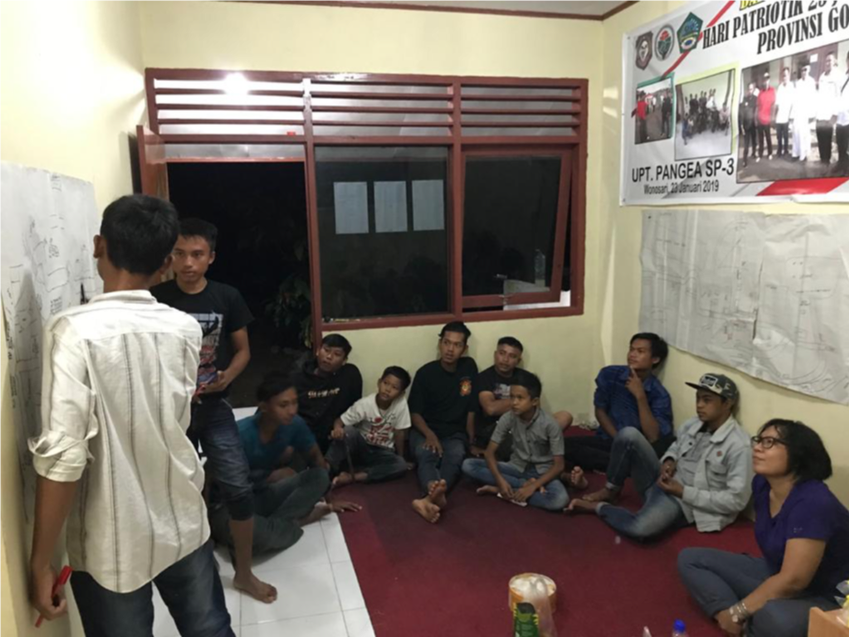
- A meeting with community members at SP3 and their young people was held simultaneously, but in two different rooms on 21 May 2019.
- Meanwhile the adults discussed issues of increasing garden productivity, looking for ways to improve the welfare of Marsudi Lestantun members through additional economic activities (making tofu and raising livestock). Many young people are exploring their future by moving to "the middle of nowhere" from their hometowns.
- Even though they are confused, these young transmigrants are also building dreams with their parents, and state that their idol is Mr. Bunaeri, who has the most productive garden. Their dream is that they can sell their garden products directly, because so far it is still through middlemen who determine the prices.
- Intensive assistance is needed, so that these young people can realize their dreams, while the members of Marsudi Lestatun themselves are still busy with their group.
- No girls can join yet.
Specific objective 1: Ecosystems, biodiversity and natural resources (Southern part of Semau Island)
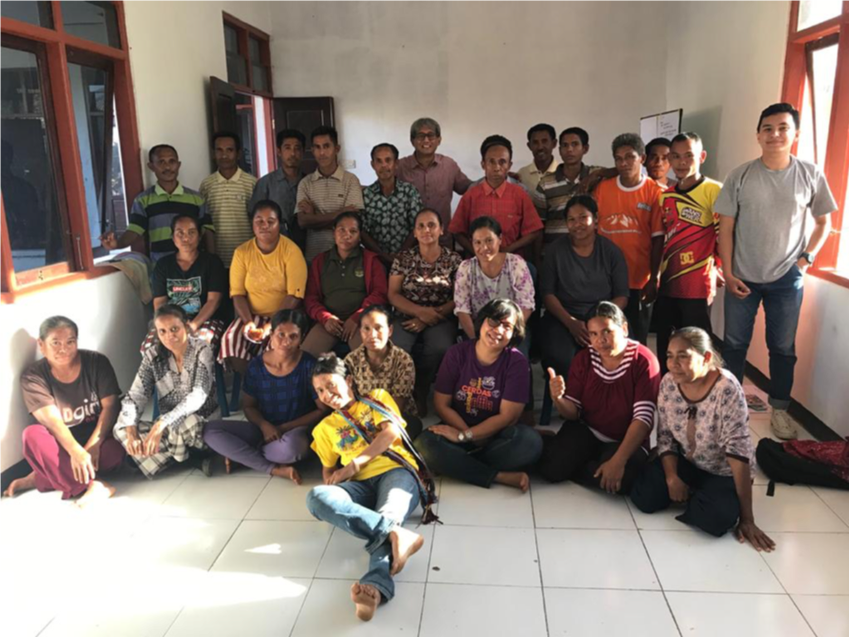
- For the South Semau Region (Ui Boa, UitiuhTuah, Uitiuh Ana, Onan Sila) it was held on September 16-17 at the Agricultural Extension Office in Uihtiuh Anna Village, Semau Island.
- Communities identify the richness of their food sources and the seeds they have along with their challenges: low productivity, poor seed quality, easily attacked by pests, lower prices for local seed crops.
- There are more than 50 types of local food sources that have been identified from this process.
- Organic farming is one of the answers, which has been proven on a limited scale: Dalem Messa.
- Other challenges in producing food: difficult water, uncertain rainfall, dependence on inputs and seeds from outside the island, middlemen, no local market, limited technical capabilities but interest in implementing natural farming; expensive labor costs.
- Agree to design a strategy to support farmers' welfare: Discussion of the Village Law, Bumdes, how to influence village decisions, starting through village deliberations.
- Each village prepares its own plan, which will be facilitated through the MSD Forum which will be overseen by Tafena Tabua.
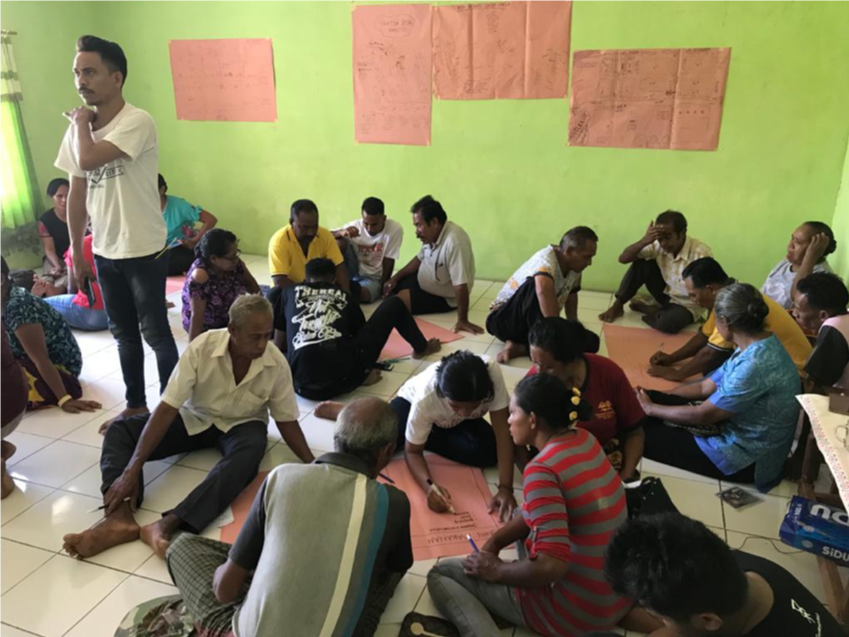
- Activities in North Semau were carried out on Wednesday, 18-19 September 2019, at the Uiasa Village office.
- The North Samau region faces challenges in the ability to cultivate land so that better results need to be improved.
- The types of plants are relatively the same as South Semau, and most of the local seeds have been lost due to government programs that introduce superior seeds.
- Looking together at the existing resources in the village and district: village funds, Bumdes. But currently it is considered that Bumdes has not seen the needs of farmers. The Bumdes business units are mostly party equipment and tent rental businesses. In fact, they even become new middlemen.
- There is a need for a network that can support farmers, how Bumdes can facilitate bartering and marketing of farmers' products, provide information and regulations needed for the welfare of farmers.
- This will be followed up in the MSD Forum, with notes on the activeness of residents to influence the use of village funds.
PROJECT OUTCOMES
Wakatobi:
Pajam Village was attended by 26 people, consisting of the Pangilia Group (6 people); Djalima Group (5 people); Forkani and implementing members (6) people; PIB 2 and young UGM students who will accompany the community 9).
Horuo Darat Village (11/1/2019), with 37 participants: consisting of the Village Head and his officials; community, supporting communities and also UGM students. The group discussions became interesting, because there was debate about what was in their village, which they did not always agree on.
Mantigola Village was attended by 20 participants, consisting of fishermen and women's groups.
Total: 83 participants.
Gorontalo:
North Tamaila (Adult) 25 people
North Tamaila (Youth): 11 participants,
SP3 Adult: 22 people
SP3 Young people: 10 young people
Pulau Semau:
South Semau 37 people, with the composition of farmers: 12 men, 12 women. Meanwhile from Mitra Nasional, Host (Pikul), Tafena Tabua, Imut Motorbike Gang, Kupang Batanam, Dalem Mesa: 7 women, 6 men.
Semau Utara by 32 people, with composition. Farmer group: 9 women, 11 men. Meanwhile from Mitra Nasional, Host (Pikul), Tafena Tabua, Imut Motorbike Gang, Kupang Batanam, Dalem Mesa: 6 women, 6 men.
PROJECT IMPACT
Positive:
- The community knows the potential of their village, the various biodiversity that once existed and needs to be restored.
- The public is aware that food consumption patterns are highly dependent on external intake.
- The community is starting to understand their rights as village families and also farmers who use/grow their own seeds.
- The community wants to find solutions together, and has a shared dream/vision about their village.
- The community has a plan to solve the challenges it faces.
BEST EXPERIENCE
The process on Semau Island (Northern and Southern parts) was the best experience, because the local partner organizations understood the links between the Prosperous Village School program and the technical activities they carried out, then there were partner organizations that directly followed up on the agreed processes. So that they are interrelated, fill and strengthen.
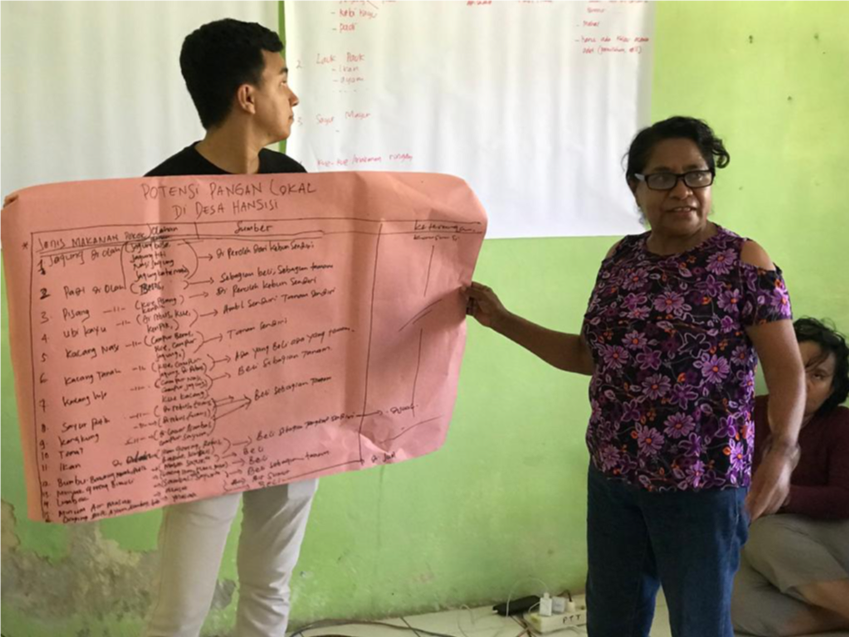
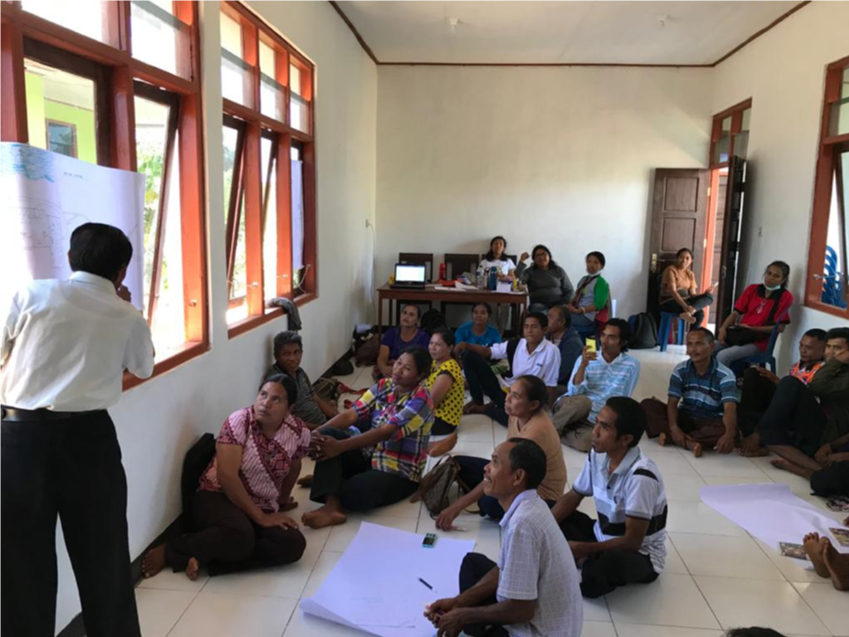
PROJECT SUSTAINABILITY
- If MSD activities are running, or local partners can link them to village policies, either through village meetings or Bumdes, these activities can continue.
- Activities can also continue as long as they provide benefits to the community, both in terms of meeting their own needs and the economy. It seems from technical training and evidence in a number of places (Semau, Gorontalo) that this can continue because the benefits are felt by the community. We cannot provide an opinion for Wakatobi, because it seems that the activities of local partners are not connected, while for Nusa Penida the new Village School assessment has not yet been carried out due to the availability of time for hosts and local partners who find it very difficult to meet.
